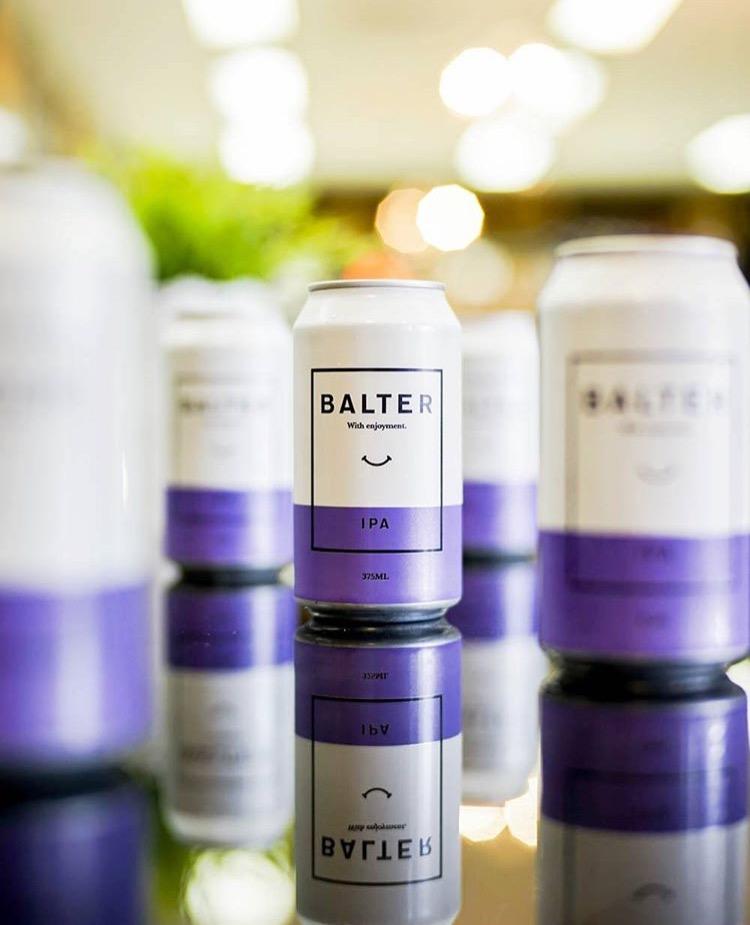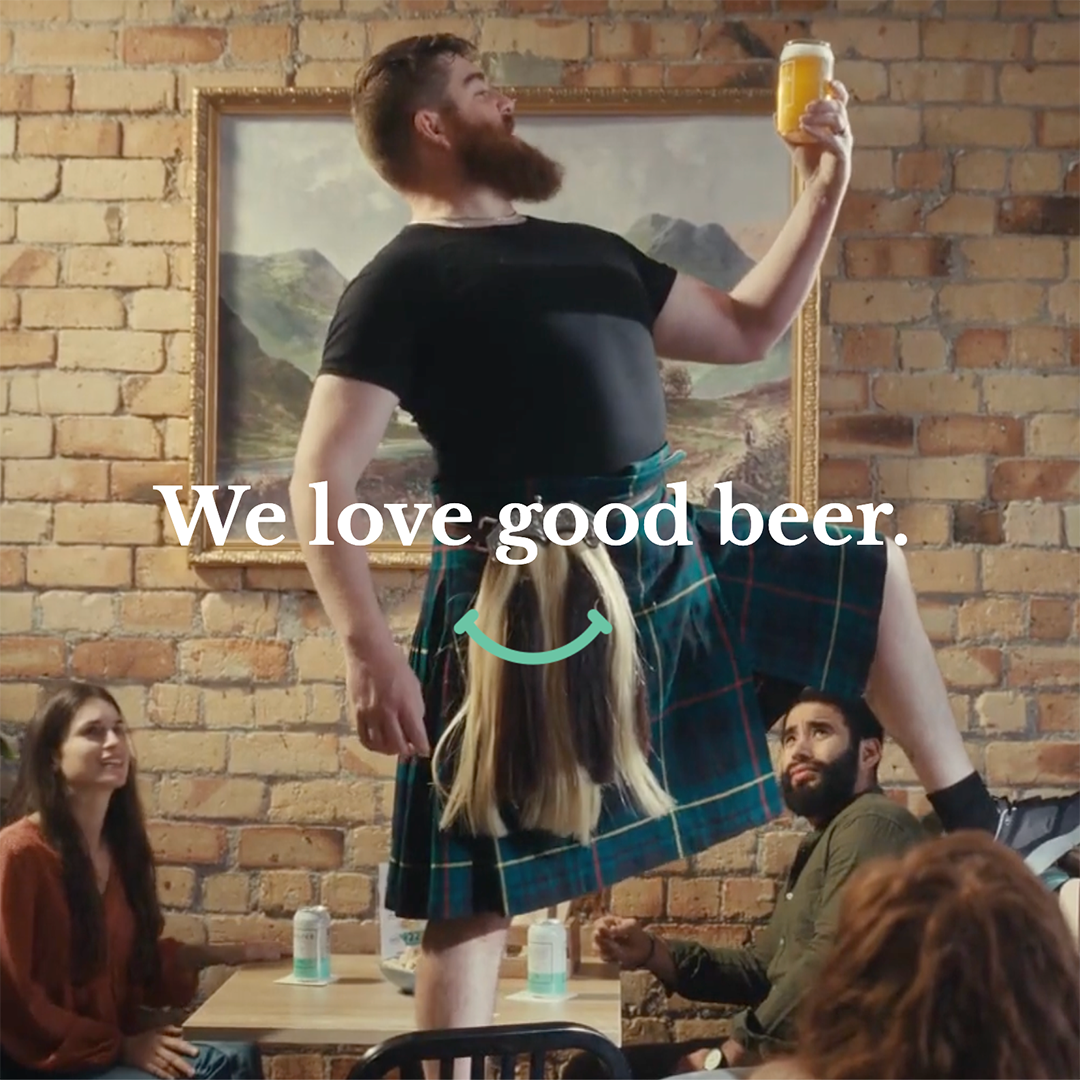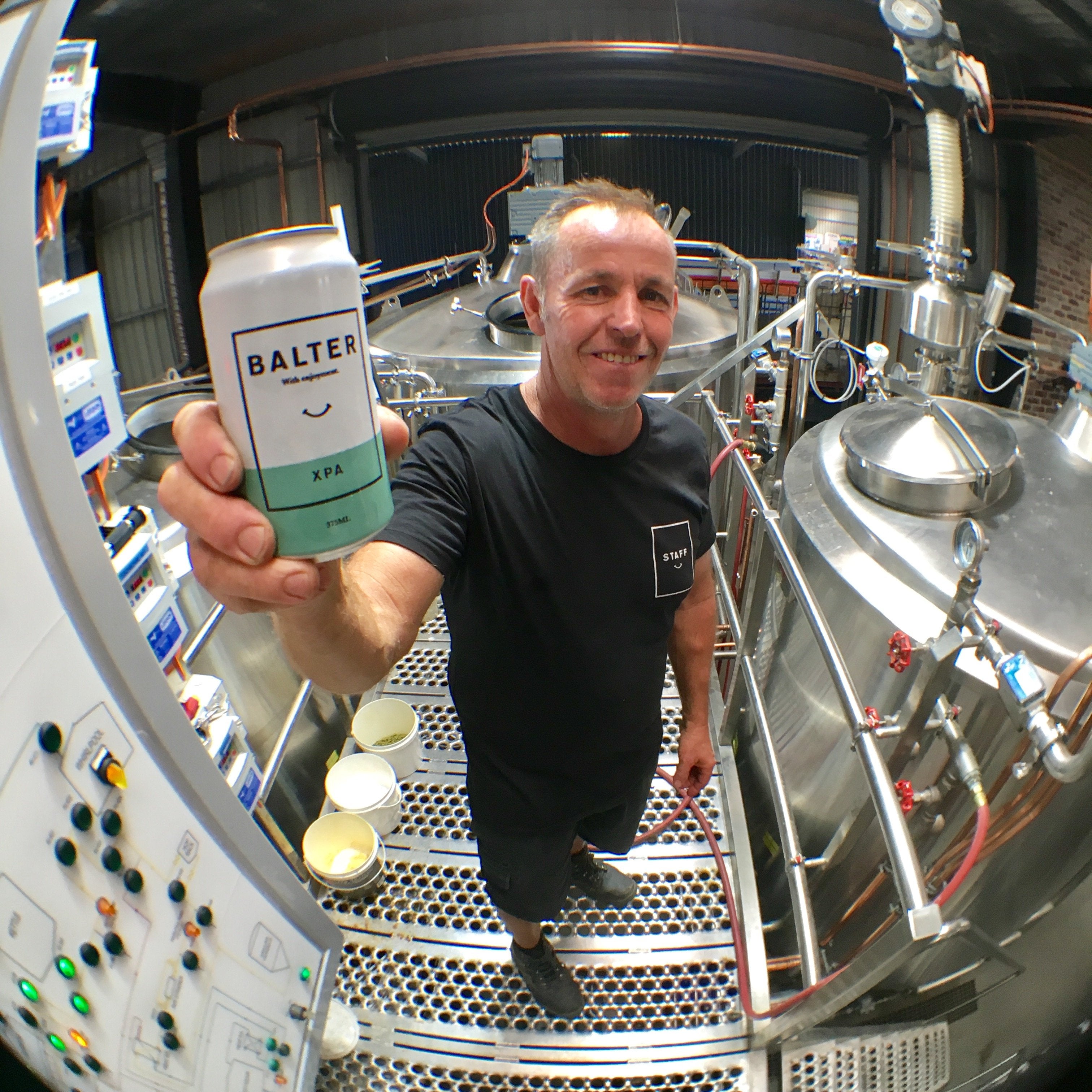
IPA - A CHAT WITH THE BREWER
Our fourth full-time tinnie flavour - The Balter IPA - has just hit the shelves. To dig deeper into why we put it out in the world, the process behind it, and when it’s best to drink, we sat down for a chat with Head Brewer Scotty Hargrave. Here’s what he had to say...

Why make an IPA?
Indian Pale Ale is normally the go-to flavour for craft beer enthusiasts because they have a lot of personality. But, we didn’t want to come out with the obvious IPA right away, because there are a lot out there, so we wanted to get it really special and a bit different. The first one we put out in the taproom, a lot of crew were like, “this is awesome, when’s it going in a can?” and I was like, “wait, that’s one IPA, it’s not the Balter IPA”.
What makes a good IPA?
We wanted to come at an IPA from the end that the bitterness builds, not that it starts bitter and becomes sweet. You need a different mix to make things different like that. We wanted that pine aromatic, so it doesn’t have a syrupy sweet kick, but has a lot of big flavours and a refined bitterness. Bitterness is normally a warning signal, so enjoying bitter flavours is something that has to be learned. When you can find something that has balance and is smooth to drink, they’re the ones that poke out from the fog at you and make you realise you love that type of beer. That balance of different flavours also suits the character of Balter, which is important to us.
When is the best time to drink an IPA?
For me, they’re best when you’ve ‘earned’ that beer. It’s the full stop on a day, or after a few other beers. It’s a perfect culmination at the end of something, like turning up the volume for the last song at a gig. They’re also great with a curry.
The IPA comes from a long lineage of other beers from your taproom, with names like ZZ Hop, Tangerine Dream and In Rainbows. Why is this one just called ‘Balter IPA’?
We wanted to let the beer stand on legs of being a good in itself, rather than the smoke and mirrors of marketing. So, we figured just calling it ‘IPA’ was as simple as it gets. The purple tinnie is enough to draw your eye and pick it up, the rest is left to the taste of the beerholder.

Why the purple can?
A few of my brewer mates will know exactly why before they even read this. I have this thing called sensinesis where sometimes you taste colours. It’s rare, but a legit thing. My mates used to give me shit because whenever I taste Simcoe hops, which are what you use to make an IPA, they taste purple to me. People are always asking “what colour does this taste like?”. For me, an IPA is definitely purple. It’s also a bold and vivacious and curvy beer, so purple suits that kind of personality.
So IPA tastes purple, but if it could be summed up in a symbol, character or some kind of logo, what would it be and why?
Maybe a purple fleur de lis, or a purple ace of spades as a tribute to Lemmy from Motorhead. Why not. From all reports Lemmy was quite a warm man and a straight shooter. I feel like the IPA is a bit like that, it has substance. I don’t know. You caught me in a vulnerable moment.
This IPA is pretty high on alcohol content compared with other beers (6.8?%). What factors go into that percentage, and is it a conscious decision to hit a target like that?
Alcohol content depends on how much malt you have to play with in the first place, and how fermentable you make it. Yeast strains also come into account. Generally the longer you leave an IPA like that the more beer you’ll get out of the tank and those flavours will integrate better as well. This particular beer I was trying to make it over 6.5%. 6% would have been cheaper, but would have been lighter-on for us and moving back toward XPA territory in taste. We wanted it to be a distinctly different beer and taste.
Now that you’ve released the IPA what’s next?
We’re releasing a seasonal beer on July 16th which we’re really excited about. It looks dark and vicious but is actually a really pleasant flavour to drink : )
Head to our BEER LOCATOR to find your closest IPA stockist.




